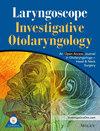Prevalence of Voice Disorders and Correlation Between Hypernasality and Acoustic Characteristics in Children With Cleft Lip and Palate
Abstract
Objective
To determine the prevalence of voice disorders, relationships between voice disorders and hypernasality, patterns of compensatory articulation disorders (CAD), acoustic characteristics, and associated factors in children with cleft palate with/without (CP ± L).
Method
The study consisted of 60 children with CP ± L, aged 7–12 years, who had undergone palate repair with/without cleft lip repair. Data were collected by evaluating voice quality using the GIRBAS scale (grade, instability, roughness, breathiness, asthenia, and strain). The Computerized Speech Lab (CSL) was used to evaluate the acoustic characteristics, including fundamental frequency (F0), shimmer, jitter, and maximum phonation time (MPT). A Fiber Optic Laryngoscope (FOL) was utilized to conduct laryngeal investigations. Spearman's Rank Correlation statistics were used to investigate correlations.
Results
Prevalence of voice disorders in children with CP ± L was 30% (18/60 cases). Laryngeal examinations showed that 33.33% had exhibited vocal nodules, and 13.34% had vocal cord edema. Regarding assessments of acoustic characteristics, children with voice disorders displayed significantly higher jitter and shimmer values than those with normal voices (p < 0.05). (mean differences for jitter and shimmer /a:/ being −0.99 and −3.60), there were positive statistically significant relationships between voice disorders and severity of hypernasality at both the word and sentence levels (r = 0.46, r = 0.55); between voice disorders and the number of CAD patterns at both the word and sentence levels, (r = 0.30, r = 0.40).
Conclusion
The prevalence of voice disorders in children with CP ± L was 30%. The severity of voice disorders from the GIRBAS scores was significantly correlated to the severity of hypernasality and the number of CAD patterns.
Study Design
A cross-sectional study.
Level of Evidence
2.

 求助内容:
求助内容: 应助结果提醒方式:
应助结果提醒方式:


